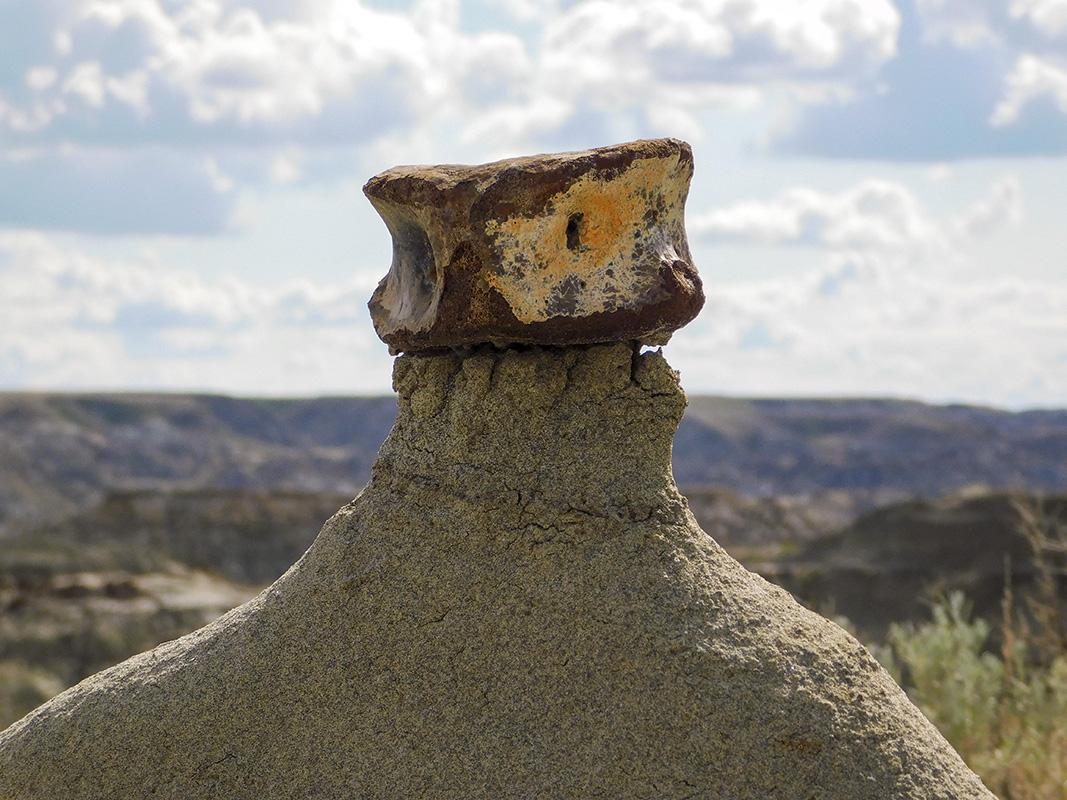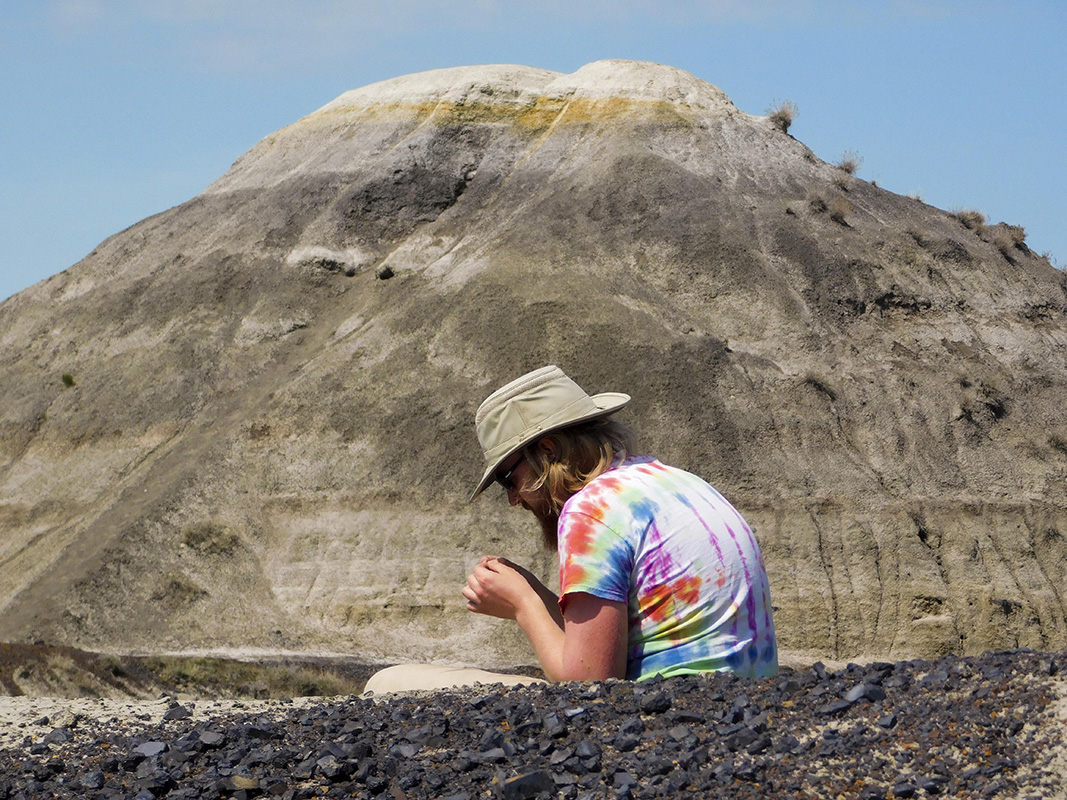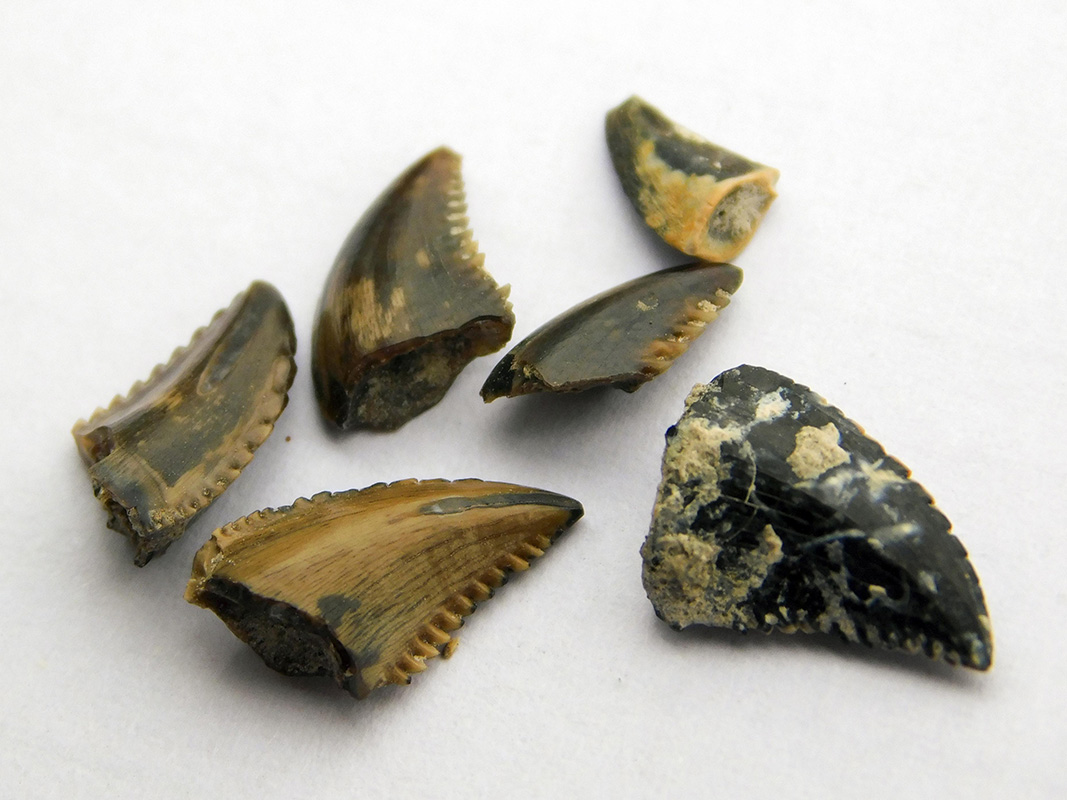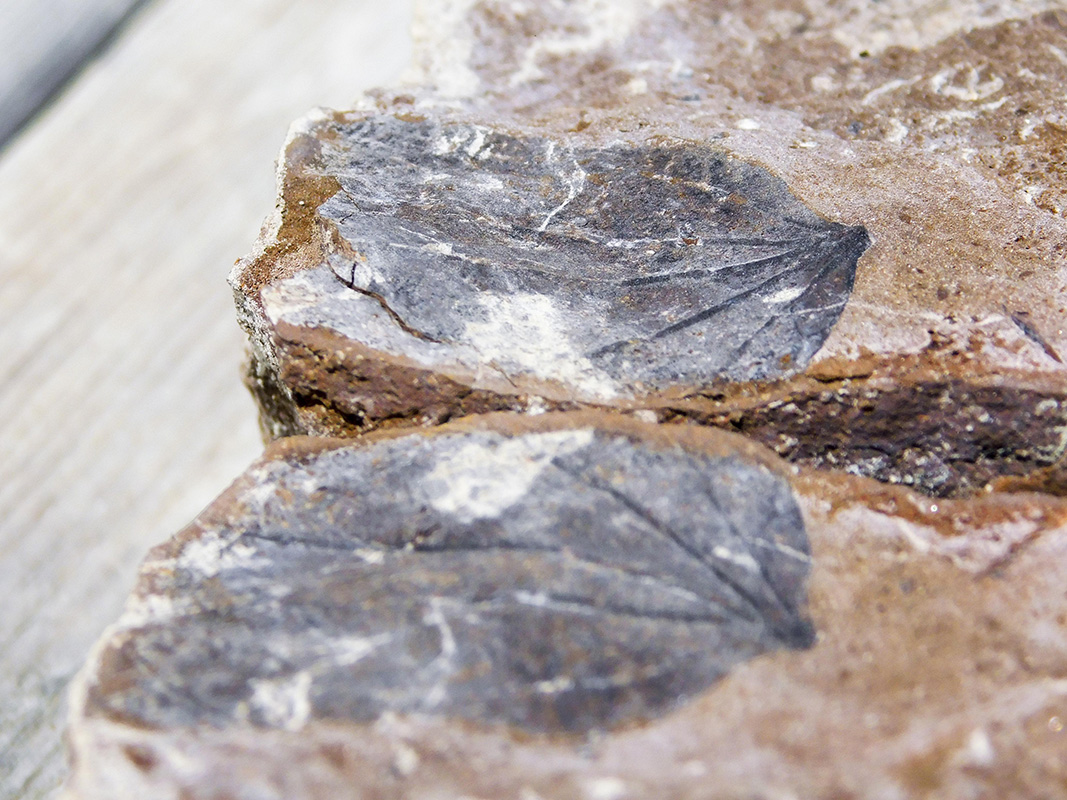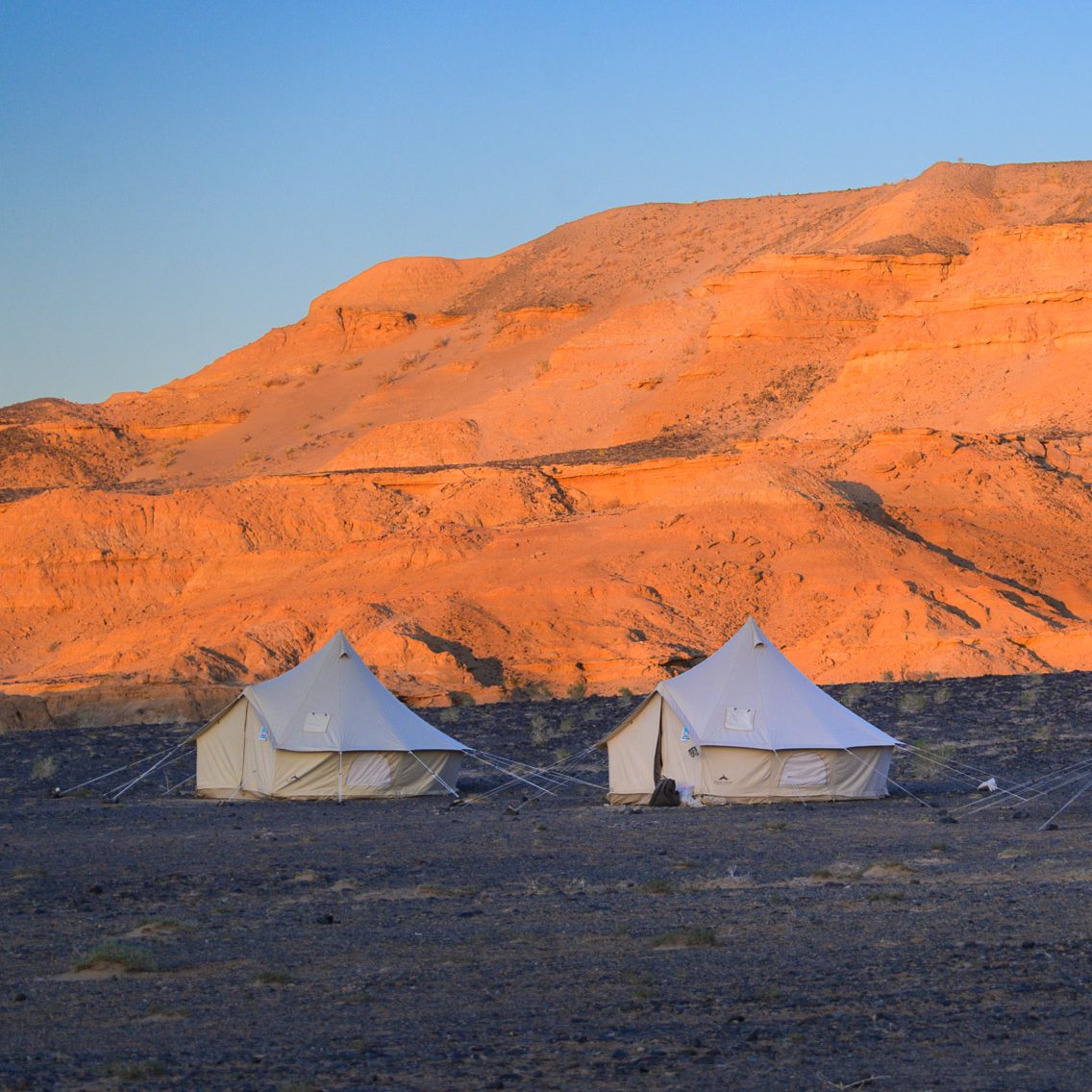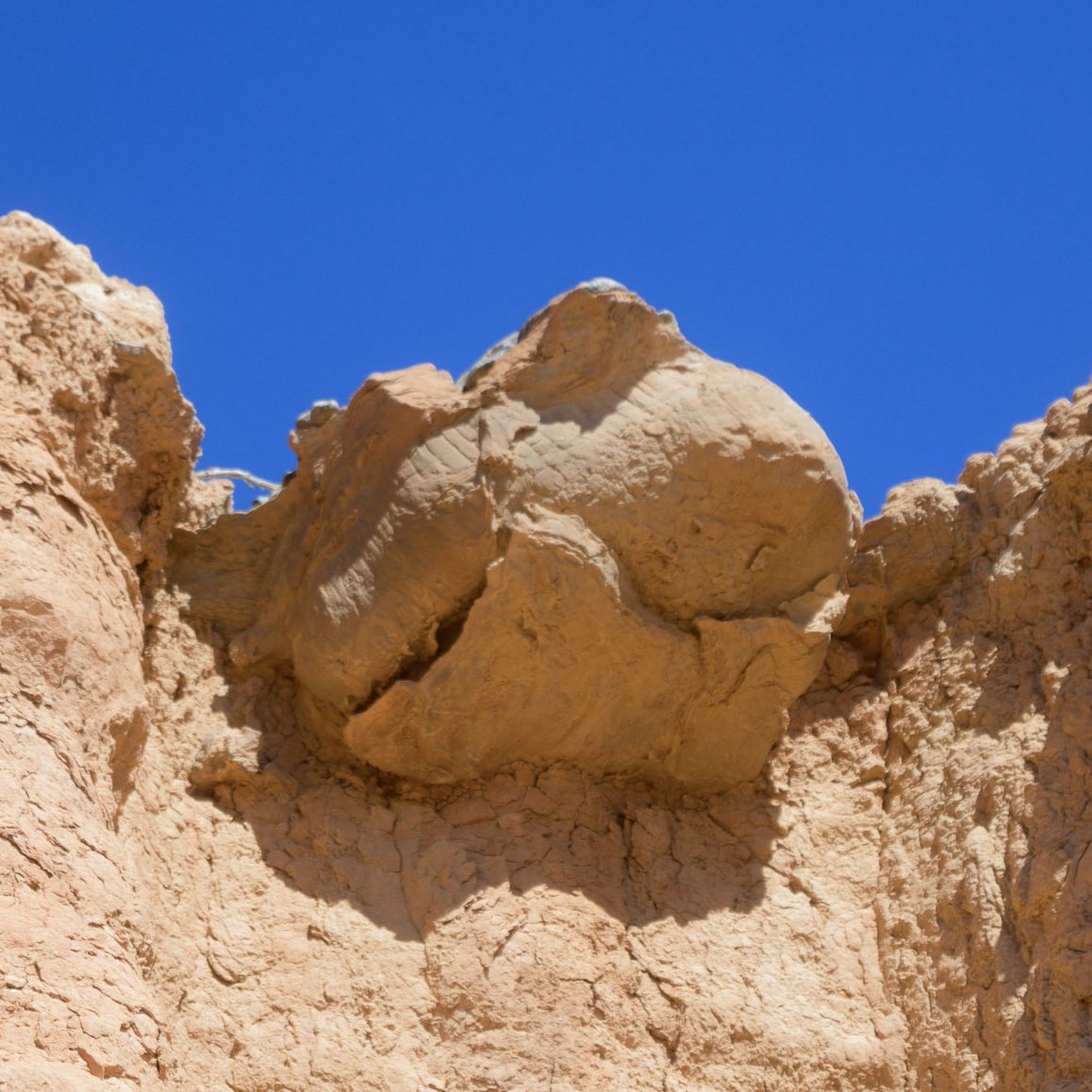Fossils are the raw data of palaeontology and new discoveries continue to refine our interpretation of ancient ecosystems. The Currie Lab actively undertakes fieldwork to prospect, excavate, and recover new fossils in collaboration with a number of colleagues and institutions across the world. This provides opportunities for research that contributes to long-term lab goals, and improves public awareness and understanding of fossil resources. Current efforts are concentrated on Cretaceous localities in Alberta and Mongolia, but past expeditions include stints on every continent. Selected publications are listed alongside associated fieldwork but more can be found under Publications.
 Designed by M. Rhodes (2021).
Designed by M. Rhodes (2021).
Alberta
Dinosaur Provincial Park
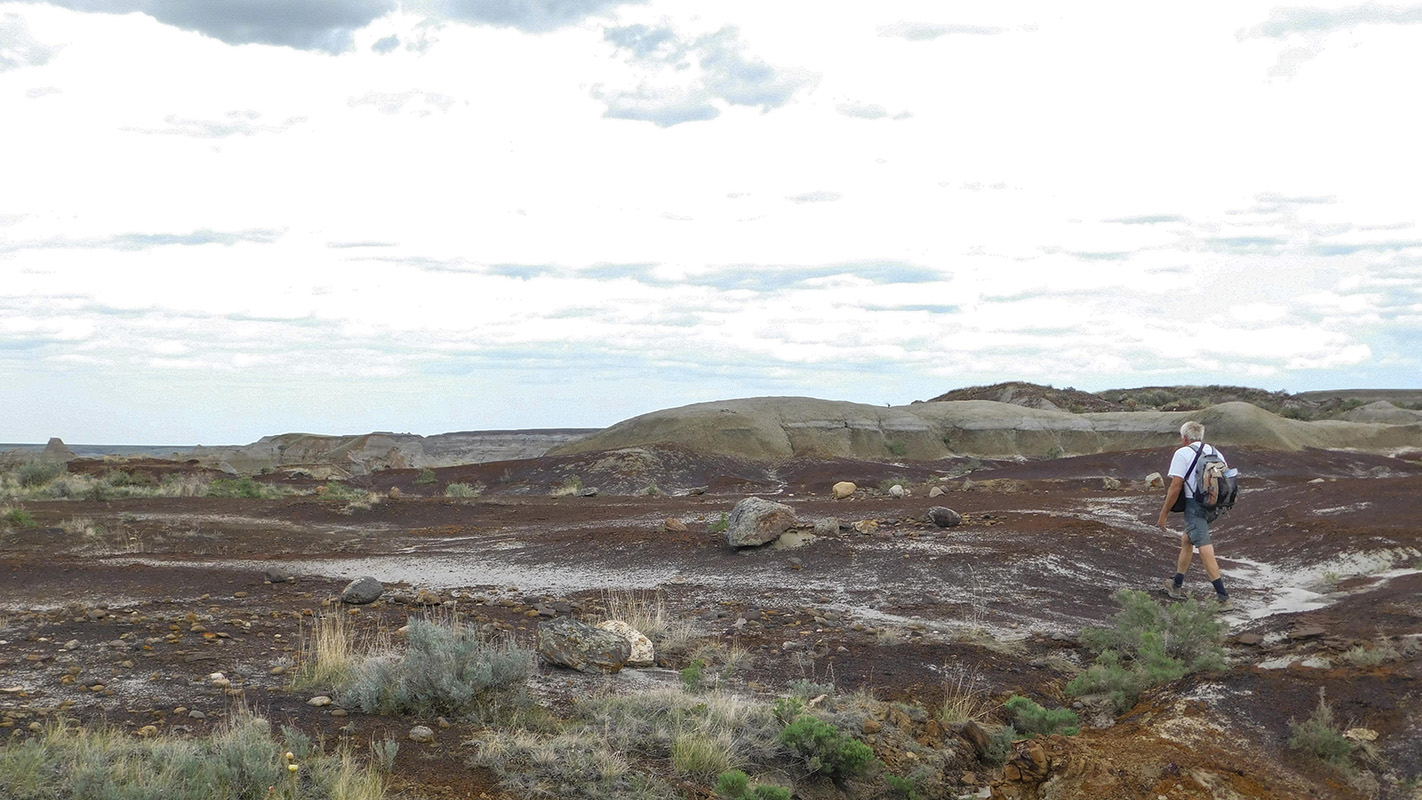 Photo by M. Rhodes (2018).
Photo by M. Rhodes (2018).
The UNESCO World Heritage Site of Dinosaur Provincial Park is world-renowned for its rich fossil deposits and picturesque landscape. The Currie Lab holds regular expeditions to this area to prospect for new finds and continue quarry excavations. Notable highlights include exceptionally well-preserved skulls and skeletons of various dinosaurs.
One of these specimens is a juvenile skeleton of the ceratopsid Chasmosaurus (Currie et al., 2016). Missing only the forelimbs, it clarified several aspects of how anatomy changed throughout growth in these horned dinosaurs—especially pertaining to cranial features—and even included skin impressions. More recently, operating from the University of Alberta Mattheis Research Ranch, a large skull of another ceratopsid, Styracosaurus, was discovered that has unexpected morphological variation and asymmetry (Holmes et al., 2020). Beyond refining the diagnostic features of Styracosaurus and the related ceratopsid Centrosaurus, it offered insight into supposed evolutionary sequences between these two dinosaurs. Yet another remarkable specimen belongs to the dromaeosaurid Saurornitholestes, comprising a fully articulated and virtually complete skeleton lacking only the end of the tail (Currie and Evans, 2020). Originally discovered and masterfully prepared by Clive Coy, this specimen preserves clear anatomical details previously unknown from fragmentary or incomplete material. It also shed light on potential behaviours and has implications for palaeoecology and Cretaceous faunal interchanges between Asia and North America.
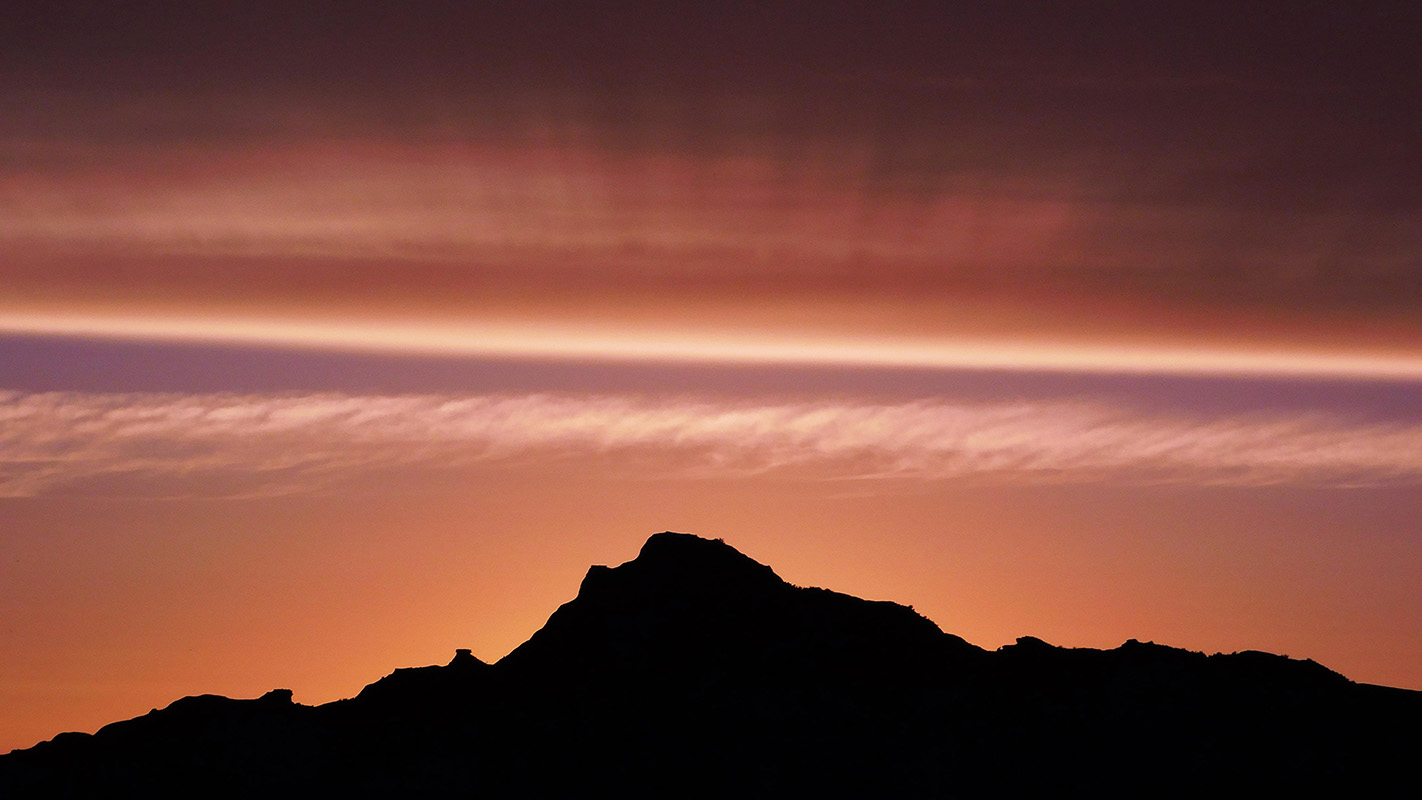 Photos by M. Rhodes (2019).
Photos by M. Rhodes (2019).
ASSOCIATED PUBLICATIONS
Currie, P.J. and Evans, D.C. 2020. Cranial anatomy of new specimens of Saurornitholestes langstoni (Dinosauria, Theropoda, Dromaeosauridae) from the Dinosaur Park Formation (Campanian) of Alberta. Anatomical Record 303(4): 691–715. DOI: 10.1002/ar.24241
Holmes, R.B., Persons, W.S., Rupal, B.S., Qureshi, A.J., and Currie, P.J. 2020. Morphological variation and asymmetrical development in the skull of Styracosaurus albertensis. Cretaceous Research 107: 104308. DOI: 10.1016/j.cretres.2019.104308
Funston, G.F. and Currie, P.J. 2020. New material of Chirostenotes pergracilis (Theropoda, Oviraptorosauria) from the Campanian Dinosaur Park Formation of Alberta, Canada. Historical Biology [published online 2020-02-17]. DOI: 10.1080/08912963.2020.1726908
Sato, H., Murray, A.M., Vernygora, O., and Currie, P.J. 2018. A rare, articulated sturgeon (Chondrostei: Acipenseriformes) from the Upper Cretaceous of Dinosaur Provincial Park, Alberta, Canada. Journal of Vertebrate Paleontology 38(4): e1488137. DOI: 10.1080/02724634.2018.1488137
Currie, P.J., Holmes, R.B., Ryan, M.J., and Coy, C. 2016. A juvenile chasmosaurine ceratopsid (Dinosauria, Ornithischia) from the Dinosaur Park Formation, Alberta, Canada. Journal of Vertebrate Paleontology 36(2): e1048348. DOI: 10.1080/02724634.2015.1048348
Funston, G.F., Persons, W.S., Bradley, G.J., and Currie, P.J. 2015. New material of the large-bodied caenagnathid Caenagnathus collinsi from the Dinosaur Park Formation of Alberta, Canada. Cretaceous Research 54: 179–187. DOI: 10.1016/j.cretres.2014.12.002
Currie, P.J. and Koppelhus, E.B. 2005. Dinosaur Provincial Park: A Spectacular Ancient Ecosystem Revealed. Indiana University Press, Bloomington, Indiana. 648 pp.
Koster, E.H. and Currie, P.J. 1987. Upper Cretaceous coastal plain sediments at Dinosaur Provincial Park, southeast Alberta. Geological Society of America, Rocky Mountain Section, Decade of North America Geology Centennial Field Guide 2: 9–14.
Currie, P.J. 1987. Theropods of the Judith River Formation of Dinosaur Provincial Park, Alberta, Canada. Tyrrell Museum of Palaeontology, Occasional Paper 3: 52–60.
Edmonton
 Photo by M. Rhodes (2019).
Photo by M. Rhodes (2019).
Edmonton is fortunate to have a dinosaur bonebed in its own backyard. Dominated by the hadrosaurid Edmontosaurus, the quarry is ideal for students to learn the ropes of palaeontological fieldwork. While practicing fossil excavation and collection techniques, students expand the known extent of the bonebed every year. Dozens to hundreds of new specimens are then prepared by students and volunteers alike in the Dino Lab, and then curated at the University of Alberta. Many of these fossils contribute to research projects, some of which were published in a special issue of Canadian Journal of Earth Sciences (Volume 51, Issue 11) on the Danek Bonebed and related studies.
Photos by M. Rhodes (2021, 2019).
ASSOCIATED PUBLICATIONS
Bell, P.R. and Currie, P.J. 2014. Albertosaurus (Dinosauria: Theropoda) material from an Edmontosaurus bonebed (Horseshoe Canyon Formation) near Edmonton: clarification of palaeogeographic distribution. Canadian Journal of Earth Sciences 51: 1052–1057. DOI: 10.1139/cjes-2014-0050
Torices, A., Reichel, M., and Currie, P.J. 2014. Multivariate analysis of isolated tyrannosaurid teeth from the Danek Bonebed, Horseshoe Canyon Formation, Alberta, Canada. Canadian Journal of Earth Sciences 51: 1045–1051. DOI: 10.1139/cjes-2014-0072
Torices, A., Funston, G.F., Kraichy, S.T., and Currie, P.J. 2014. The first appearance of Troodon in the Upper Cretaceous site of Danek Bonebed, and a reevaluation of troodontid quantitative tooth morphotypes. Canadian Journal of Earth Sciences 51: 1039–1044. DOI: 10.1139/cjes-2014-0071
Currie, P.J. and Koppelhus, E.B. 2014. Implications of finding a ceratopsian horncore in the Danek Bonebed. Canadian Journal of Earth Sciences 51: 1034–1038. DOI: 10.1139/cjes-2014-0065
Vanderven, E., Burns, M.E., and Currie, P.J. 2014. Histologic growth dynamic study of Edmontosaurus regalis (Dinosauria: Hadrosauridae) from a bonebed assemblage of the Upper Cretaceous Horseshoe Canyon Formation, Edmonton, Alberta, Canada. Canadian Journal of Earth Sciences 51: 1023–1033. DOI: 10.1139/cjes-2014-0064
Baert, M., Burns, M.E., and Currie, P.J. 2014. Quantitative diagenetic analyses of Edmontosaurus regalis (Dinosauria: Hadrosauridae) postcranial elements from the Danek Bonebed, Upper Cretaceous Horseshoe Canyon Formation, Edmonton, Alberta, Canada: implications for allometric studies of fossil organisms. Canadian Journal of Earth Sciences 51: 1007–1016. DOI: 10.1139/cjes-2014-0060
Bramble, K., Burns, M.E., and Currie, P.J. 2014. Enhancing bonebed mapping with GIS technology using the Danek Bonebed (Upper Cretaceous Horseshoe Canyon Formation, Edmonton, Alberta, Canada) as a case study. Canadian Journal of Earth Sciences 51: 987–991. DOI: 10.1139/cjes-2014-0056
Funston, G.F. and Currie, P.J. 2014. A previously undescribed caenagnathid mandible from the late Campanian of Alberta, and insights into the diet of Chirostenotes pergracilis (Dinosauria: Oviraptorosauria). Canadian Journal of Earth Sciences 51: 156–165. DOI: 10.1139/cjes-2013-0186
Burns, M.E., Coy, C., Arbour, V.M., Currie, P.J., and Koppelhus, E.B. 2014. The Danek Edmontosaurus Bonebed: new insights on the systematics, biogeography, and palaeoecology of Late Cretaceous dinosaur communities. Canadian Journal of Earth Sciences 51: v–vii. DOI: 10.1139/cjes-2014-0217
Student-led fieldwork
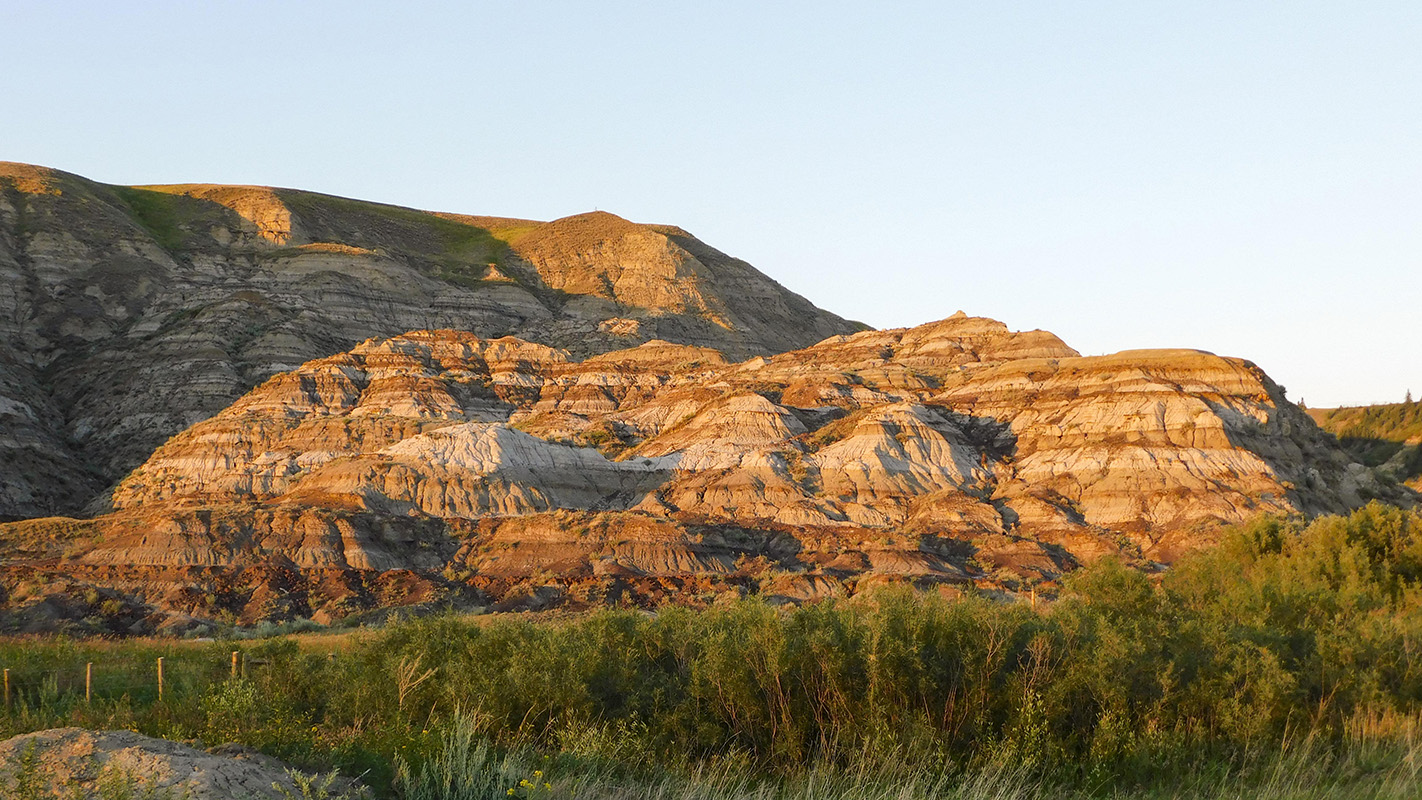 Photo by M. Rhodes (2018).
Photo by M. Rhodes (2018).
Currie Lab students have organized several seasons of fieldwork in the Red Deer River valley exploring exposures of the Horseshoe Canyon Formation. Generous donors and enthusiastic volunteers allow continued fieldwork efforts in this region. Serendipitous discoveries of rare dinosaur fossils have contributed to student research projects. One such example was a small caenagnathid tibia that preserved internal bone microstructure, which offered clues about the lifestyle of young oviraptorosaurs (Funston and Currie, 2018a). Some newly documented microsites have produced unexpected but rather interesting assemblages, notable not only for their richness in troodontid teeth (Ryan et al., 1998), but also troodontid eggshell (Funston and Currie, 2018b). Among these assemblages, baby tyrannosaurid material has also surfaced (Funston et al., 2021). Active research is underway on other sites with dinosaur skeletons, bonebeds, and trackways.
Photos by M. Rhodes (2019).
ASSOCIATED PUBLICATIONS
Funston, G.F., Powers, M.J., Whitebone, S.A., Brusatte, S.L., Scannella, J.B., Horner, J.R., and Currie, P.J. 2021. Baby tyrannosaurid bones and teeth from the Late Cretaceous of western North America. Canadian Journal of Earth Sciences (In Press). DOI: 10.1139/cjes-2020-0169
Funston, G.F. and Currie, P.J. 2018a. A small caenagnathid tibia from the Horseshoe Canyon Formation (Maastrichtian): Implications for growth and lifestyle in oviraptorosaurs. Cretaceous Research 92: 220–230. DOI: 10.1016/j.cretres.2018.08.020
Funston, G.F. and Currie, P.J. 2018b. The first record of eggshell from the Horseshoe Canyon Formation (Maastrichtian) of Alberta, Canada. Canadian Journal of Earth Sciences 55(4): 436–441. DOI: 10.1139/cjes-2017-0273
Ryan, M.J., Currie, P.J., Gardner, J.D., Vickaryous, M.K., and Lavigne, J.M. 1998. Baby hadrosaurid material associated with an unusually high abundance of Troodon teeth from the Horseshoe Canyon Formation, Upper Cretaceous, Alberta, Canada. Gaia 15: 123–133. DOI: 10.7939/R32B8VS51
Mongolia
The Gobi Desert of Mongolia was home to a fantastic diversity of plants and animals during the Cretaceous, making it an extraordinary place for palaeontology today. Inspired by accounts from explorers like Roy Chapman Andrews, Phil cherished the opportunity to follow in their footsteps. Additionally, the prehistoric faunas of Mongolia and North America—especially Alberta—include many closely related dinosaurs, so research on either assemblage helps to better understand both.
Fieldwork in the Gobi has contributed to resolving dinosaur mysteries such as Deinocheirus (Lee et al., 2014), relocating quarries from previous ventures such as the Polish-Mongolian Palaeontological Expeditions (Currie, 2016; Currie et al., 2018), and organizing efforts like the Korean-Mongolian International Dinosaur Project. Furthermore, improving public awareness and establishing institutions to protect these resources are essential to promote fossils as part of Mongolian heritage and to combat poaching. There is much more research to be done in Mongolia, Alberta, and other places around the world, even in well-known localities. Continued fieldwork is required to find, collect, and preserve our palaeontological resources.
Fieldwork conducted during the Korean-Mongolian International Dinosaur Project helped piece together the puzzle of a peculiar and enigmatic dinosaur. Posted by TEDx Talks on December 8, 2014.
Photos by K. Nguyen (2023).
ASSOCIATED PUBLICATIONS
Currie, P.J., Wilson, J.A., Fanti, F., Mainbayar, B., and Tsogtbaatar K. 2018. Rediscovery of the type localities of the Late Cretaceous Mongolian sauropods Nemegtosaurus mongoliensis and Opisthocoelicaudia skarzynskii: Stratigraphic and taxonomic implications. Palaeogeography, Palaeoclimatology, Palaeoecology 494: 5–13. DOI: 10.1016/j.palaeo.2017.10.035
Chinzorig, T., Kobayashi, Y., Tsogtbaatar, K., Currie, P.J., Takasaki, R., Tanaka, T., Iijima, M., and Barsbold, R. 2018. Ornithomimosaurs from the Nemegt Formation of Mongolia: manus morphological variation and diversity. Palaeogeography, Palaeoclimatology, Palaeoecology 494: 91–100. DOI: 10.1016/j.palaeo.2017.10.031
Evans, D.C., Hayashi, S., Chiba K., Watabe, M., Ryan, M.J., Lee, Y.N., Currie, P.J., Tsogtbaatar, K., and Barsbold, R. 2018. Morphology and histology of new cranial specimens of Pachycephalosauridae (Dinosauria: Ornithischia) from the Nemegt Formation, Mongolia. Palaeogeography, Palaeoclimatology, Palaeoecology 494: 121–134. DOI: 10.1016/j.palaeo.2017.11.029
Funston, G.F., Mendonca, S.E., Currie, P.J., and Barsbold, R. 2018. A dinosaur community composition dataset for the Late Cretaceous Nemegt Basin of Mongolia. Data in Brief 16: 660–666. DOI: 10.1016/j.dib.2017.11.086
Lee, H.J., Lee, Y.N., Adams, T.L., Currie, P.J., Kobayashi, Y., Jacobs, L.L., and Koppelhus, E.B. 2018. Theropod trackways associated with a Gallimimus foot skeleton from the Nemegt Formation, Mongolia. Palaeogeography, Palaeoclimatology, Palaeoecology 494: 160–167. DOI: 10.1016/j.palaeo.2017.10.020
Stettner, B., Persons, W.S., and Currie, P.J. 2018. A giant sauropod footprint from the Nemegt Formation (Upper Cretaceous) of Mongolia. Palaeogeography, Palaeoclimatology, Palaeoecology 494: 168–172. DOI: 10.1016/j.palaeo.2017.10.027
Tsogtbaatar, C., Kobayashi, Y., Tsogtbaatar, K., Currie, P.J., Mahito, M., and Barsbold, R. 2017. First ornithomimid (Theropoda, Ornithomimosauria) from the Upper Cretaceous Djadokhta Formation of Tögrögiin Shiree, Mongolia. Scientific Reports 7: 5835. DOI: 10.1038/s41598-017-05272-6
Currie, P.J. 2016. Dinosaurs of the Gobi: Following in the footsteps of the Polish-Mongolian Expeditions. Palaeontologia Polonica 67: 83–100. DOI: 10.4202/pp.2016.67_083
Currie, P.J., Funston, G.F., and Osmólska, H. 2016. New specimens of the crested theropod Elmisaurus rarus from Mongolia. Acta Palaeontologica Polonica 61: 143–157. 10.4202/app.00130.2014
Funston, G.F., Currie, P.J. and Burns, M.E. 2016. New elmisaurine specimens from North America and their relationship to the Mongolian Elmisaurus rarus. Acta Palaeontologica Polonica 61: 159–173. DOI: 10.4202/app.00129.2014
Burns, M.E., Tumanova, T.A., and Currie, P.J. 2015. Postcrania of juvenile Pinacosaurus grangeri (Ornithischia: Ankylosauria) from the Upper Cretaceous Alagteeg Formation, Alag Teeg, Mongolia: implications for ontogenetic allometry in ankylosaurs. Journal of Paleontology 89: 168–182. DOI: 10.1017/jpa.2014.14
Arbour, V.M., Currie, P.J., and Badamgarav, D. 2014. The ankylosaurid dinosaurs of the Upper Cretaceous Baruungoyot and Nemegt formations of Mongolia. Zoological Journal of the Linnean Society 172: 631–652. DOI: 10.1111/zoj.12185
Lee, Y.-N., Barsbold, R., Currie, P.J., Kobayashi, Y., Lee, H.-J., Godefroit, P., Escuillie, F., and Tsogtbaatar, C. 2014. Resolving the long-standing enigmas of a giant ornithomimosaur Deinocheirus mirificus. Nature 515: 257–260. DOI: 10.1038/nature13874
Arbour, V.M. and Currie, P.J. 2013. The taxonomic identity of a nearly complete ankylosaurid skeleton from the Gobi Desert of Mongolia. Cretaceous Research 46: 24–30. DOI: 10.1016/j.cretres.2013.08.008
Arbour, V.M., Lech-Hernes, N.L., Guldberg, T.E., Hurum, J.H., and Currie, P.J. 2013. An ankylosaurid dinosaur from Mongolia with in situ armour and keratinous scale impressions. Acta Palaeontologica Polonica 58(1): 55–64. DOI: 10.4202/app.2011.0081
Bell, P.R., Currie, P.J., and Lee, Y.N. 2012. Tyrannosaur feeding traces on Deinocheirus (Theropoda: ?Ornithomimosauria) remains from the Nemegt Formation (Late Cretaceous), Mongolia. Cretaceous Research 37: 186–190. DOI: 10.1016/j.cretres.2012.03.018
Fanti, F., Currie, P.J., and Badamgarav, D. 2012. New specimens of Nemegtomaia from the Baruungoyot and Nemegt Formations (Late Cretaceous) of Mongolia. PLOS ONE 7(2): e31330. DOI: 10.1371/journal.pone.0031330
Barsbold, R., Osmólska, H., Watabe, M., Currie, P.J., and Tsogtbaatar, K. 2000. A new oviraptorosaur (Dinosauria, Theropoda) from Mongolia: the first dinosaur with a pygostyle. Acta Paleontologica Polonica 45: 97–106.
Dong, Z.M. and Currie, P.J. 1996. On the discovery of an oviraptorid skeleton on a nest of eggs at Bayan Mandahu, Inner Mongolia, People’s Republic of China. Canadian Journal of Earth Sciences 33: 631–636. DOI: 10.1139/e96-046
Dong Z.M. and Currie, P.J. 1993. Protoceratopsian embryos from Inner Mongolia, China. Canadian Journal of Earth Sciences 30: 2248–2254. DOI: 10.1139/e93-195
All expeditions
 Locations of fieldwork expeditions by country.
Locations of fieldwork expeditions by country.
Arctic Canada
Antarctica
Argentina
Australia
Big Valley, AB
China
Dinosaur Provincial Park, AB
Dry Island Provincial Park, AB
Edmonton, AB
Grande Cache, AB
Grande Prairie, AB
Greenland
Madagascar
Milk River, AB
Mongolia
Peace River Canyon, BC
South Saskatchewan River, AB
